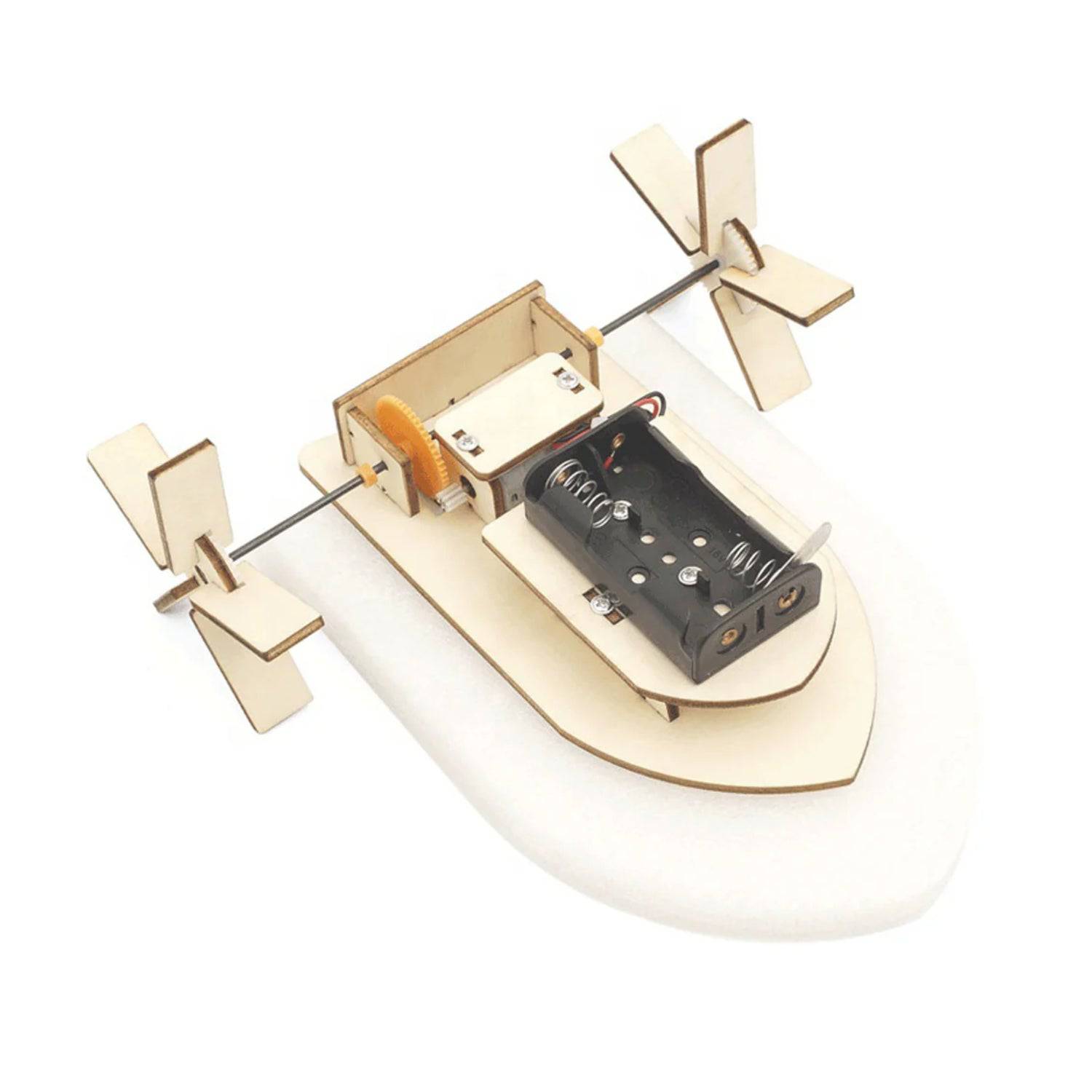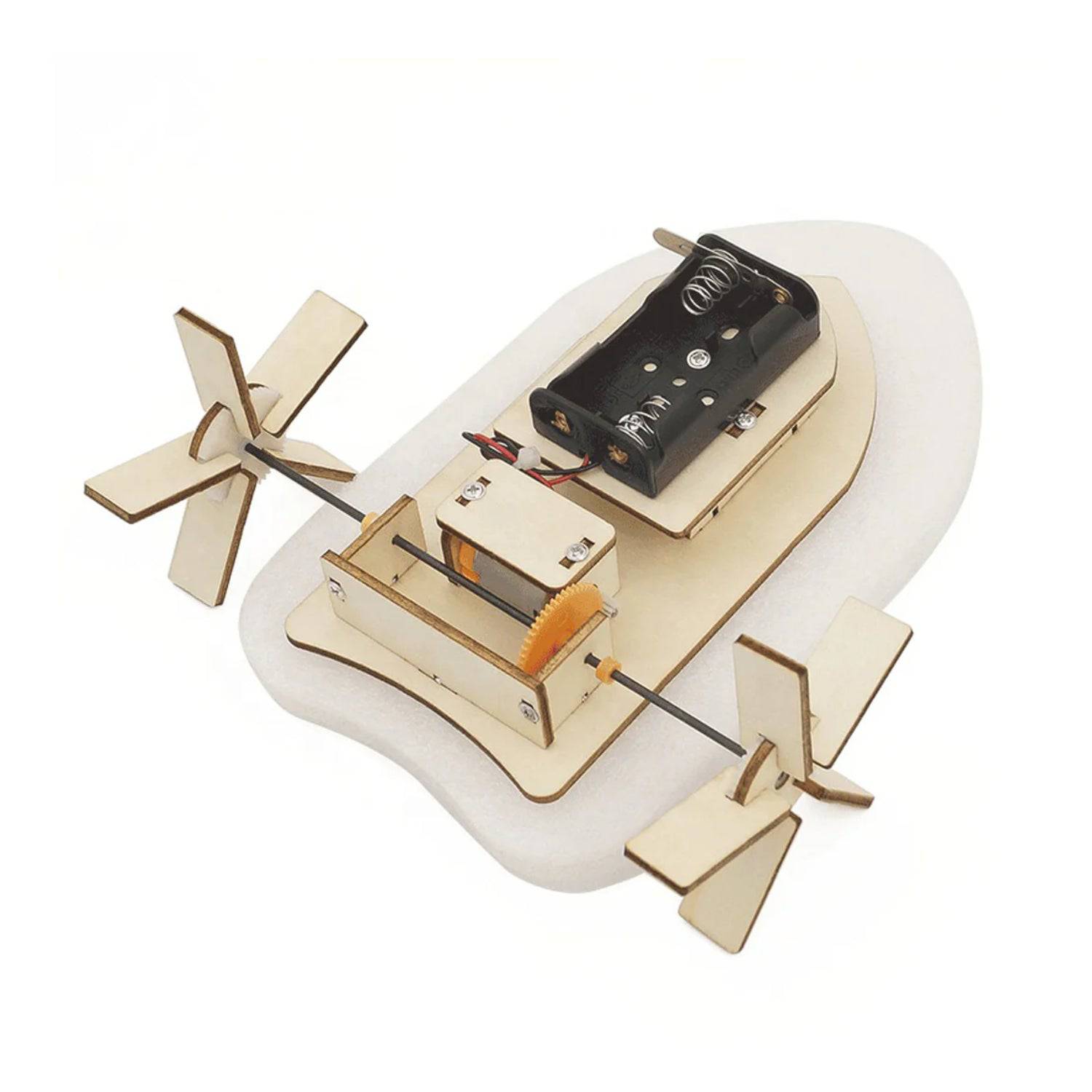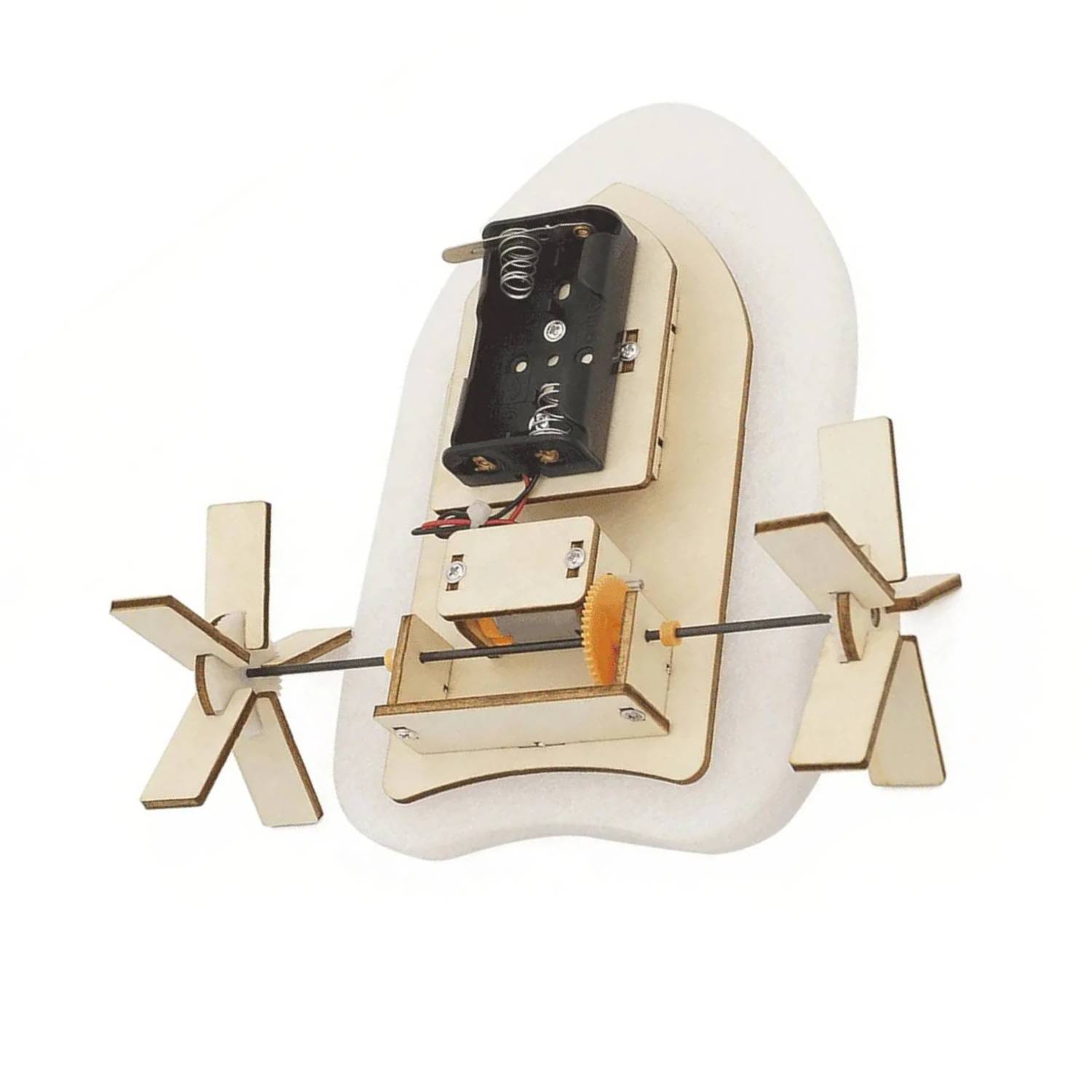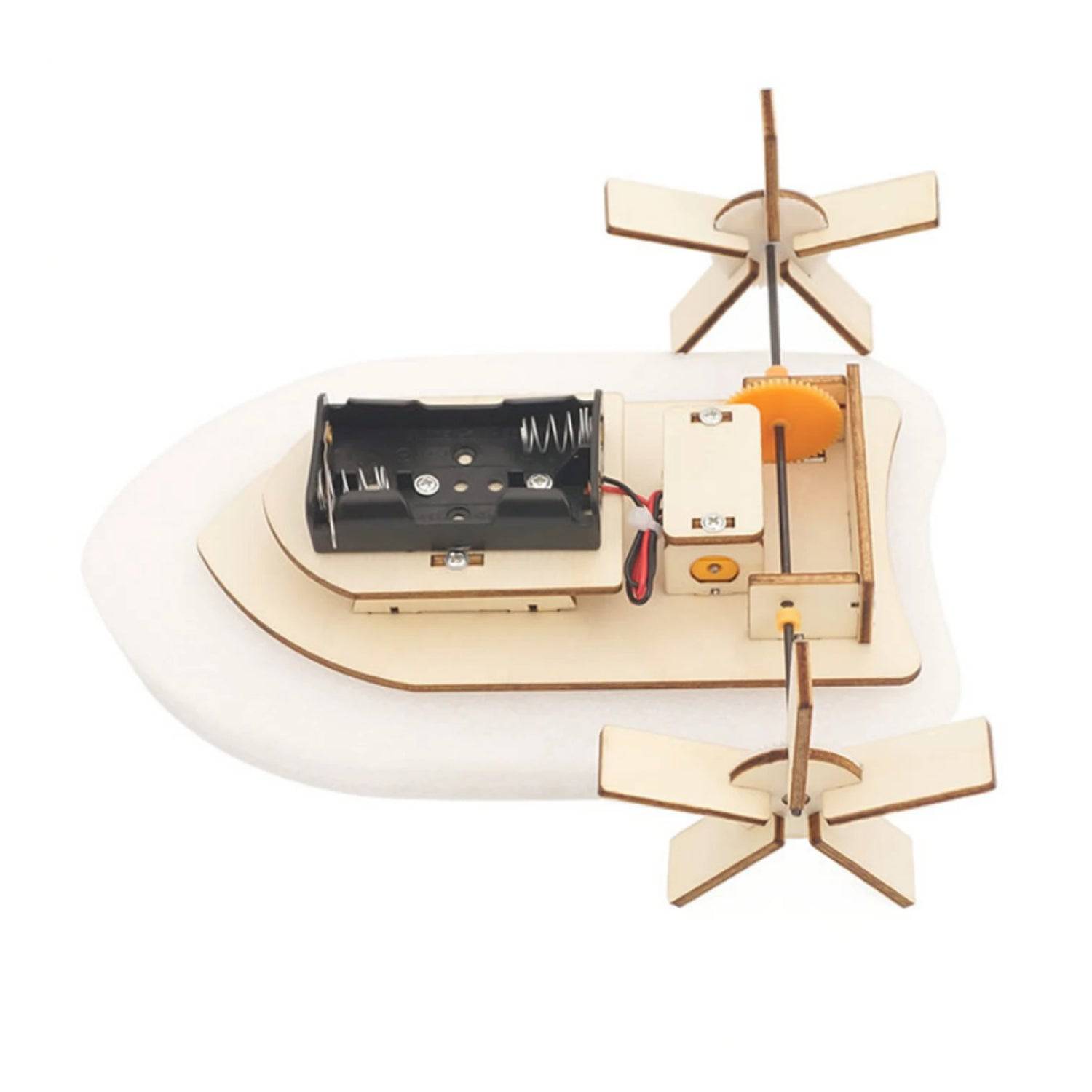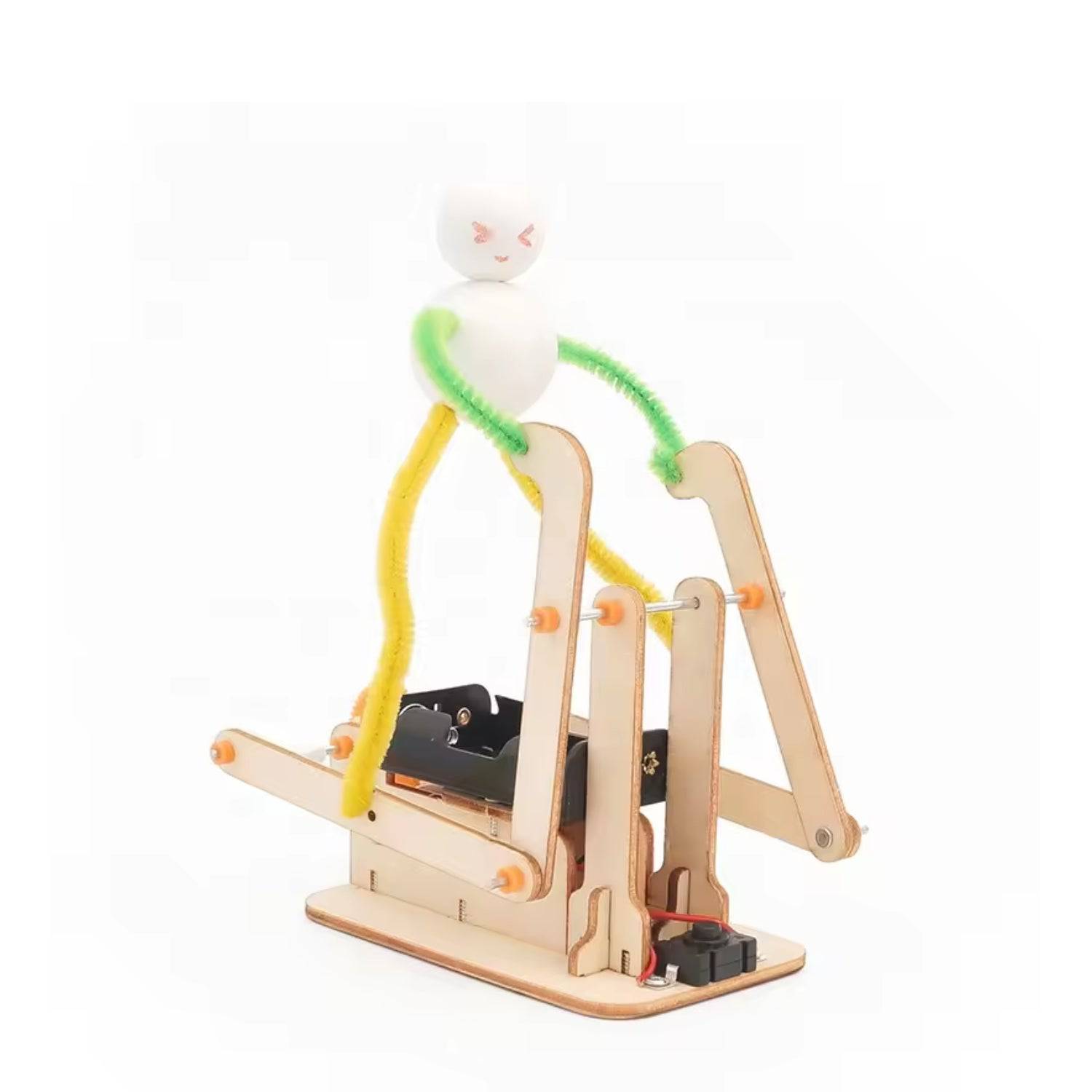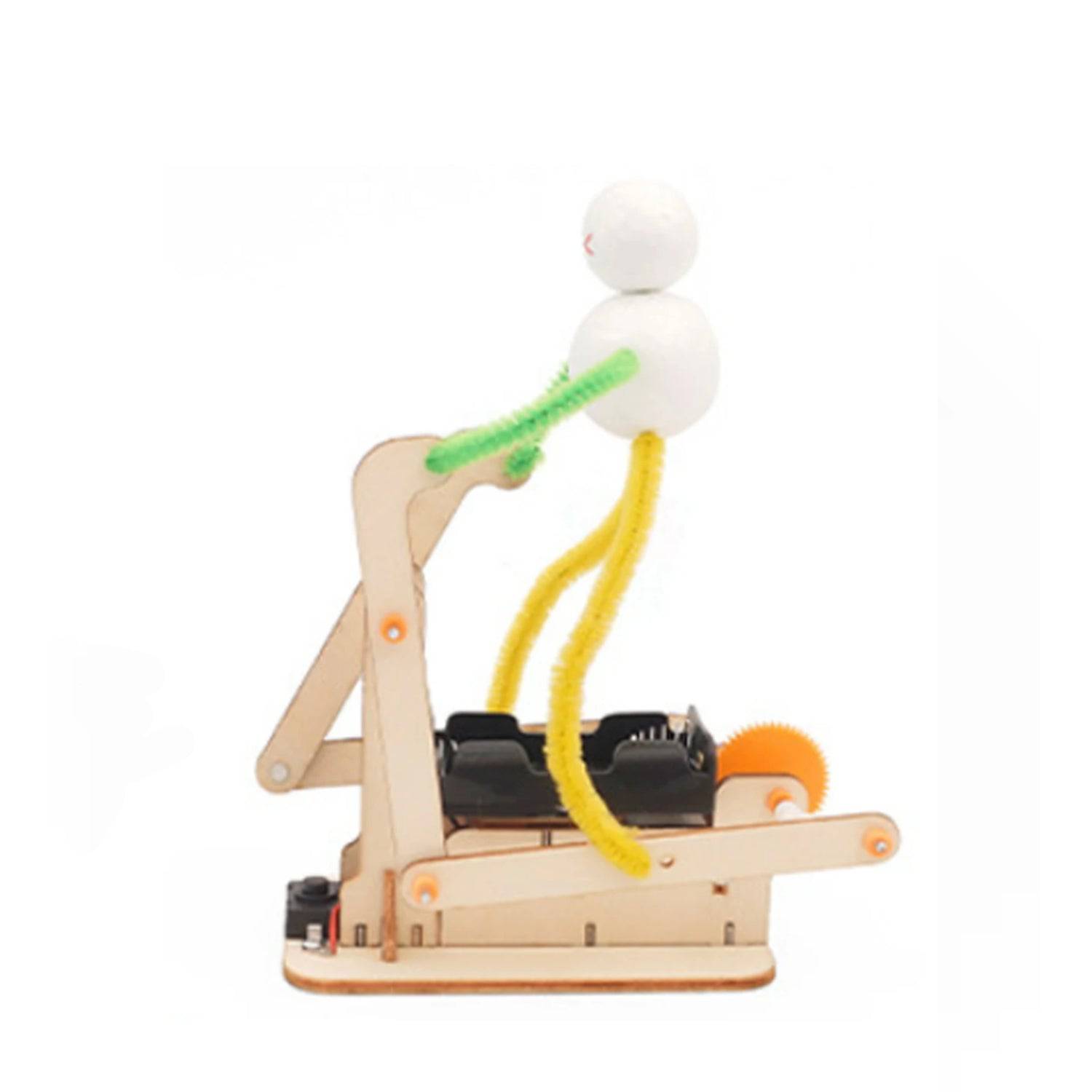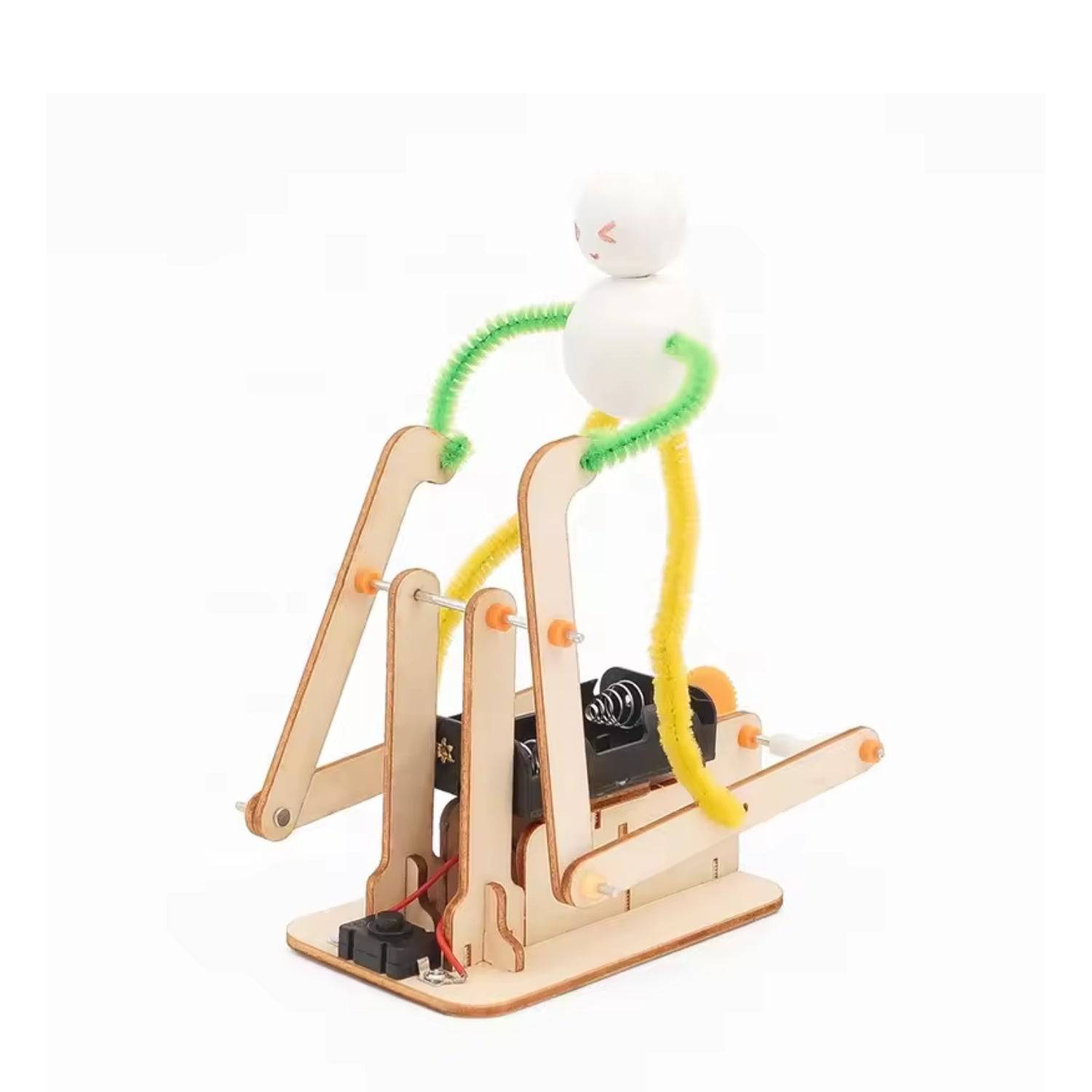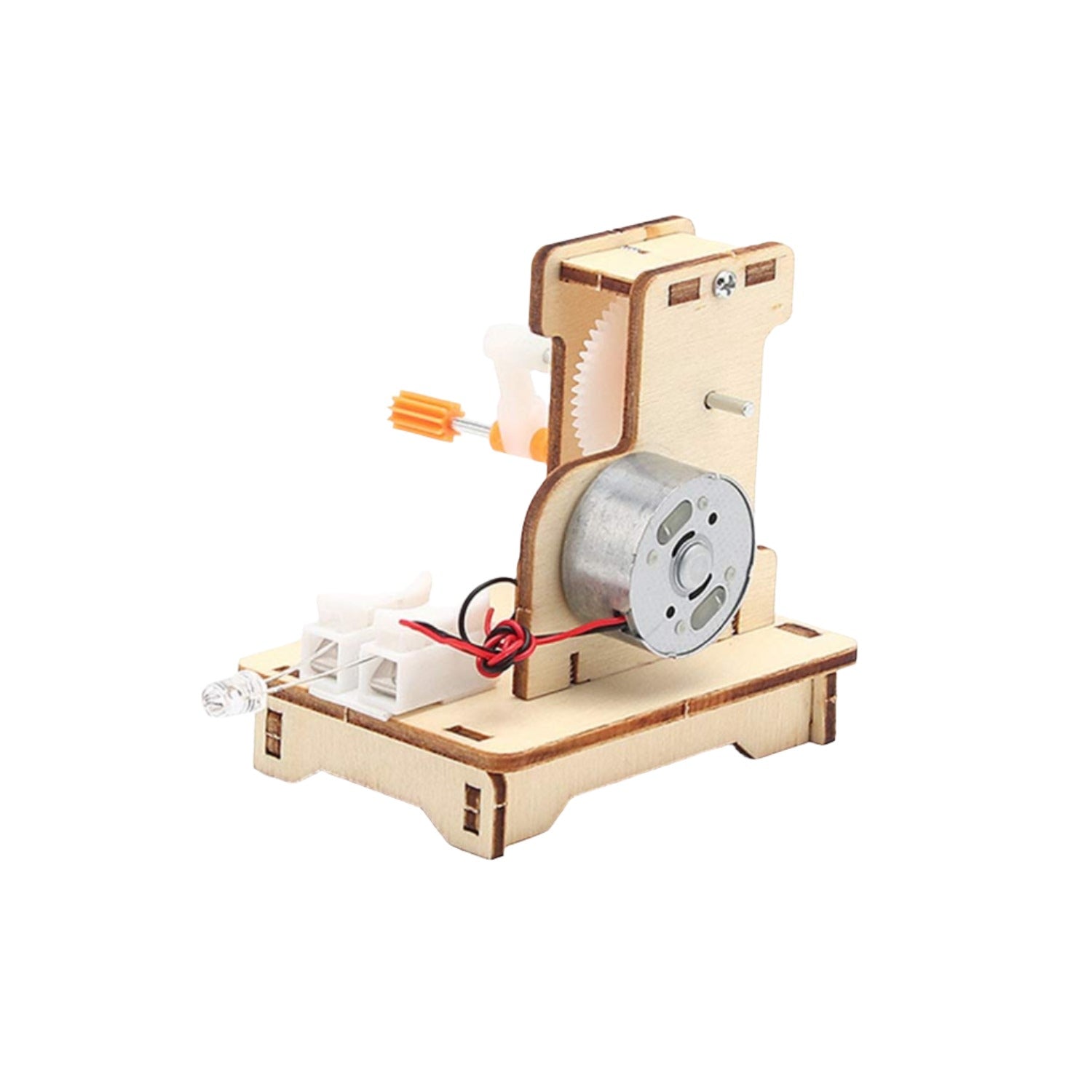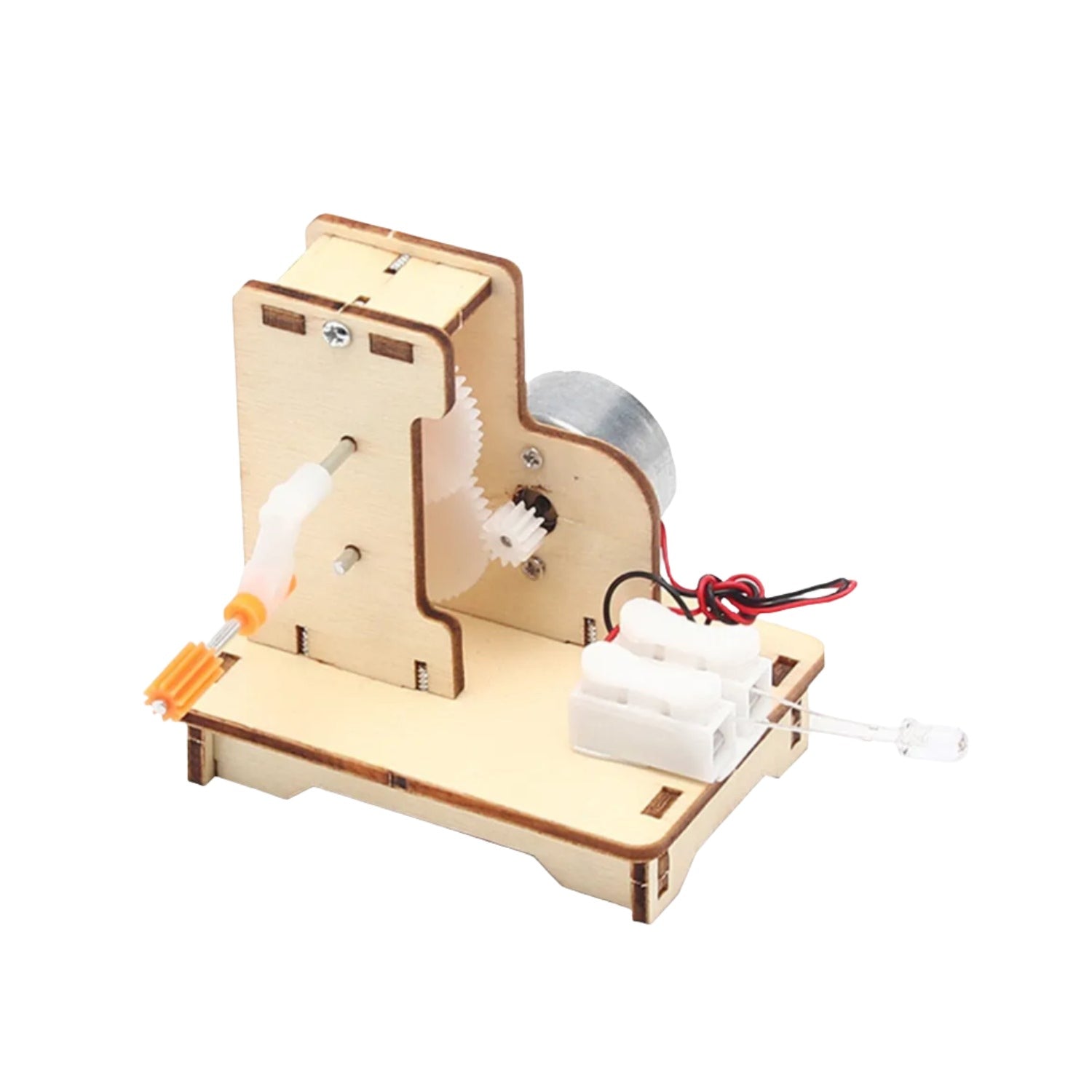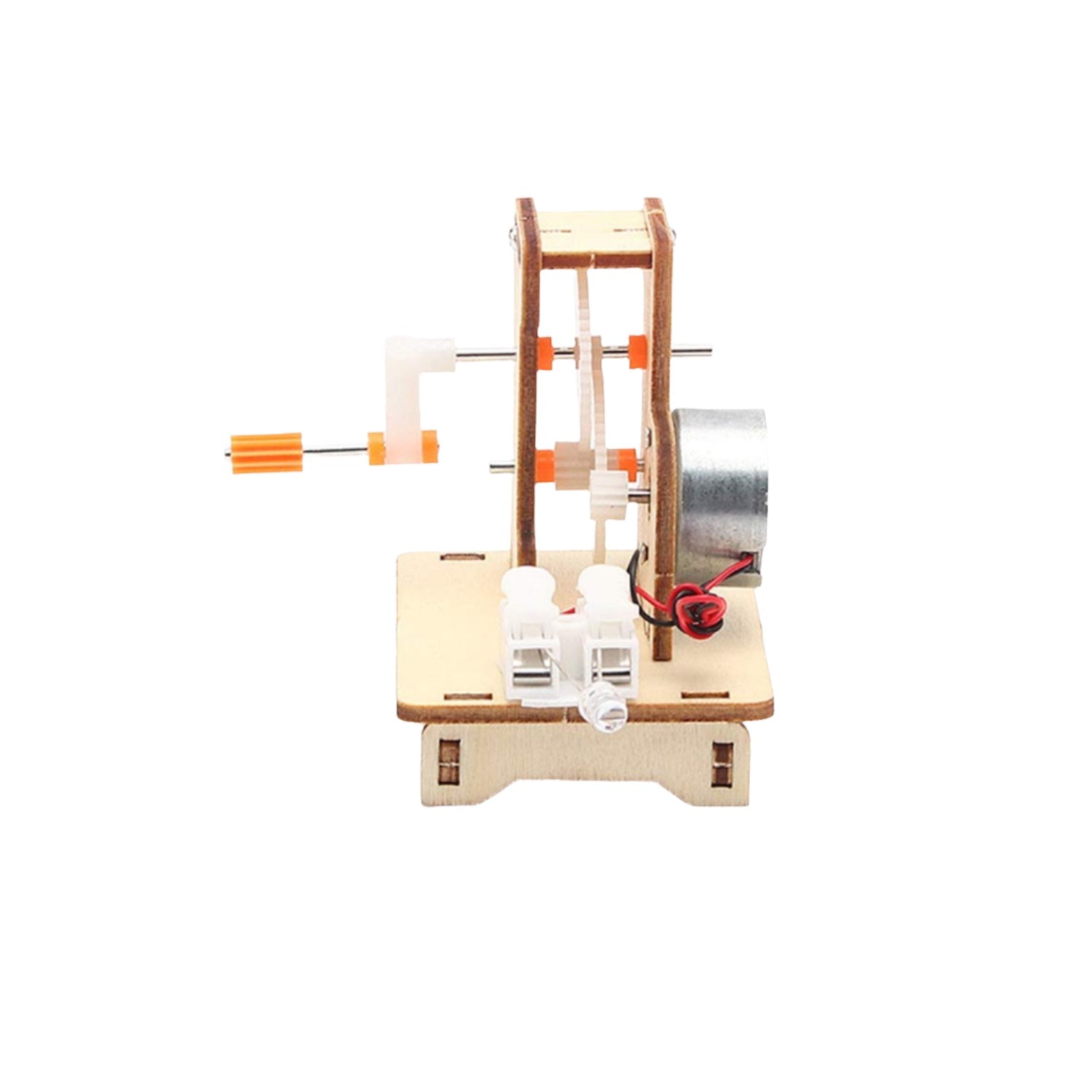
Instant Dispatch
Dispatched within 2 Hour
Free Delivery
All Over India Free Delivery
Sales Inquiry
+91 9315954044
Menu
Beyond the Classroom: Interactive Science
June 19, 2025
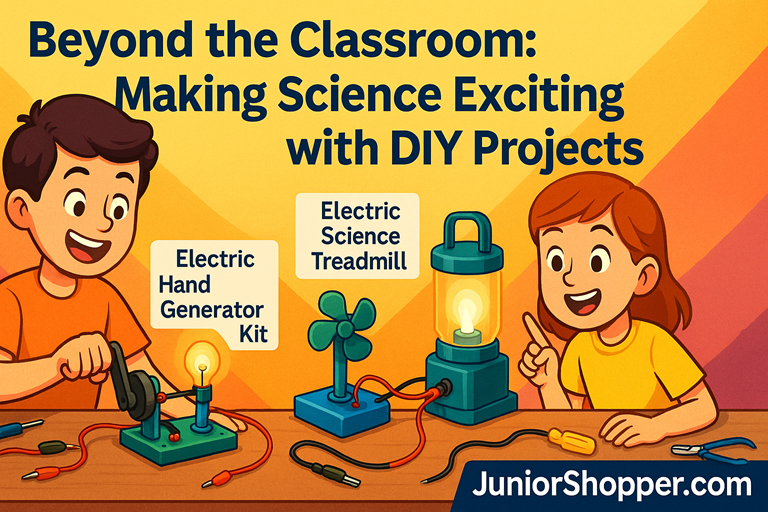
Beyond the Classroom
This experience explores how hands-on DIY projects transform abstract scientific principles into tangible, engaging learning. We'll delve into two kits that demystify energy conversion, making science exciting and understandable for everyone.
The Core Concept: Energy Transformation
At the heart of these kits is the fundamental principle that energy isn't created or destroyed, it just changes form. This section introduces the energy conversion process that you will explore interactively.
Mechanical Energy
The energy of motion from cranking or walking.
Electrical Energy
Generated by moving a magnet near a wire coil.
Light & Heat
The final, observable output of the conversion.
Explore the Electric Hand Generator
This kit provides a direct, tangible experience with electricity generation. Use the slider below to simulate cranking the generator. Observe how your mechanical effort is converted into light, and explore the scientific principles that make it possible.
From Crank to Current
Turning the crank spins a magnet inside a coil of wire. This interaction between the moving magnetic field and the stationary wire forces electrons to move, creating an electric current. This current then flows through the wires to the light bulb, causing it to glow. The faster you turn the crank, the faster the magnet spins, generating a stronger current and a brighter light.
Electromagnetic Induction
Discovered by Michael Faraday, this is the core principle. It states that a changing magnetic field within a closed loop of wire induces a voltage, which drives an electric current. The hand generator is a perfect demonstration: the spinning magnet constantly changes the magnetic field experienced by the wire coil, inducing the current that powers the bulb.
The Law of Resistance
Lenz's Law explains why the crank is harder to turn when the bulb is lit. It states that the induced current creates its own magnetic field that *opposes* the change that produced it. You are physically working against this opposing magnetic force. This resistance is a tangible demonstration of the conservation of energy: your extra mechanical effort is being directly converted into the electrical energy lighting the bulb.
Harness Human Power: The Science Treadmill
This conceptual kit explores how everyday motion, like walking, can become a source of renewable energy. Toggle between the two primary mechanisms below to see how kinetic energy from footsteps can be converted into usable electricity, stored, and then used to power devices.
Direct Conversion via Pressure
Piezoelectric materials generate an electric charge when mechanical stress is applied. In this model, sensors under the treadmill mat convert the direct pressure of each footstep into a small electrical pulse. These pulses are collected, converted, and stored in a battery, demonstrating a direct solid-state energy conversion.
Rotational Motion Drives a Generator
This method is similar to the hand generator. The motion of the user walking on the belt turns rollers. This rotational motion is used to drive a small dynamo (generator). The dynamo's spinning magnet and coil convert the mechanical rotation into electrical energy, which is then captured and stored.
Energy Harvest Cycle
1. Harvest
Kinetic energy from footsteps is captured.
2. Store
Energy is accumulated in a battery or capacitor.
3. Use
Stored power runs small devices like fans or chargers.
Comparative Impact & Broader Lessons
While both kits teach energy conversion, they highlight different principles and connect to different real-world applications. This chart compares their educational value, followed by a summary of the key skills these hands-on tools help cultivate.
Systems Thinking
Learners see science not as isolated facts but as interconnected systems with inputs, processes, and outputs. This fosters a holistic understanding crucial for solving complex, real-world problems.
Critical Inquiry
These kits are tools for experimentation. They empower users to form hypotheses, test variables (like crank speed), and analyze results, building core scientific method skills.
Sense of Agency
By actively generating power and understanding the systems, learners realize they can interact with and influence technology. This builds confidence and inspires future innovators.
Related Products
Electric Science Treadmill ⚡🏃♂️
Electric Science Treadmill – Explore Motion & Energy in Action! ⚡🏃♂️.
Electric Hand Generator Kit ⚡🔄
Electric Hand Generator Kit – Generate Power with Your Hands! ⚡🔄.
Related Blog Posts

Can Toys Teach Quantum Physics?
Many creative toys and games aim to make quantum physics more touchable and fun. They can spark curiosity and make tricky ideas easier to approach. Here's a look at some examples. Click on a toy's name to see a bit more about it!

Why STEM Toys Are Smarter Than Your Average Teddy Bear 🧸🧪
STEM toys are indeed "smarter" due to their intentional design for cultivating critical 21st-century cognitive abilities like problem-solving and technological literacy. They bridge abstract concepts with hands-on experience, fostering inquiry and innovation.
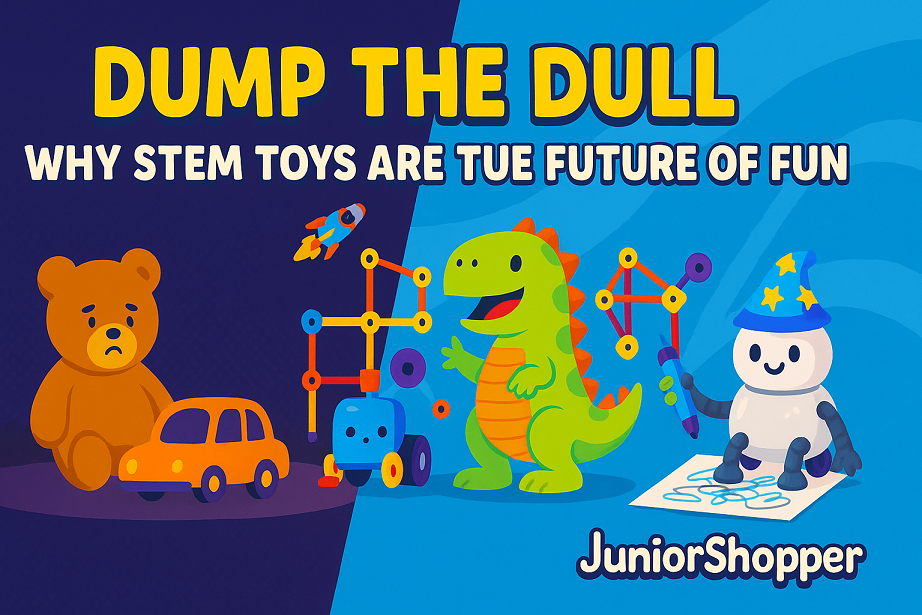
Dump the Dull—Why STEM Toys Are the Future of Fun 🎉➡️🚀
STEM toys represent a fundamental shift, blending learning and fun seamlessly. They lay an indispensable foundation for critical thinking, problem-solving, and innovation—essential for navigating our evolving world. By transforming learning into an exciting adventure, STEM toys are strategic investments in a child's future, fostering a generation of curious, capable, and confident innovators.
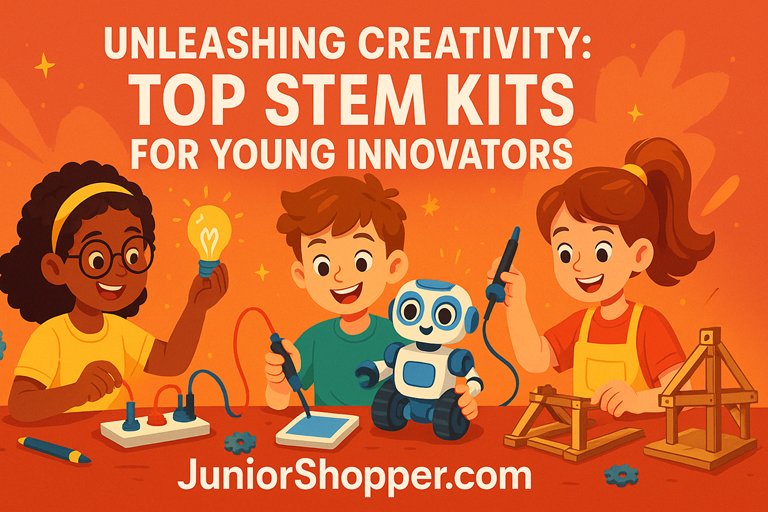
The Power of Hands-On Learning
STEM kits are more than just toys; they are gateways to innovation. They transform abstract concepts into tangible experiences, empowering children to think critically, solve problems, and build a foundational love for discovery.
